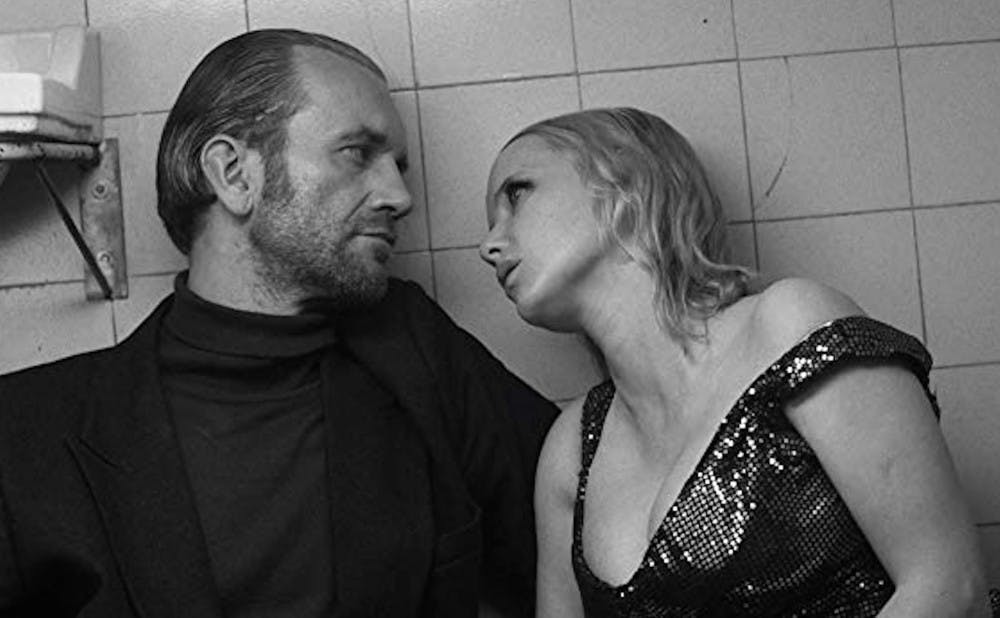Garnering three Oscar nominations, more than any prior Polish production, it seemed like Pawel Pawlikowski’s “Cold War” was destined to make history even before most American theaters decided to screen it. Ahead of the actual Academy Awards, the film has been the subject of discussions erupted concerning its cinematography, accuracy and politics. Many Americans might confront such a chiefly European production with skepticism, yet the movie now reaches wider and wider audiences across the country, defying initial expectations and mirroring its continental success.
Pawlikowski, whose 2013 movie “Ida” won an Academy Award for Best Foreign Language Film, dedicated the black-and-white film to his late parents, who also inspired most of the movie’s plot. In 1949, the pianist and conductor Wiktor (Tomasz Kot) comes to the Polish countryside to recruit talent for a newly established folk ensemble. There, he encounters the aspiring singer Zula (Joanna Kulig); they quickly fall in love, yet the Communist apparatus pressures Zula into furnishing information about Wiktor’s avant-garde activities. While on a concert tour to Berlin, they plan to escape to the West, but as Wiktor waits for her to join him, he is left alone, chain-smoking at the deserted border crossing.
The plot is entirely consumed by their romance, but never is its legitimacy called into question. In an early, fateful scene that could as easily have come from Michael Curtiz’s “Casablanca,” their stern gazes meet at a dinner party, sparking their infatuation that never quite ends. The auteur Pawlikowski dares to take the topic of love impressively seriously, weaving seldom outbursts of passion with the bleak totality of the lovers’ situation, circumventing cliché-ridden platitudes with stunning elegance.
Years later, Zula visits Wiktor in Paris, where he has resided since their separation in Berlin. When he attends one of her performances in Split, Croatia, the Yugoslav intelligence service deports him before he can get to her. As the agents shove him onto a departing train, he seeks to acquiesce them by calling Zula the woman of his life, only to be met by a snarky border officer asking “a femme fatale, huh?,” unaware how accurately the term fits their situation. Even when she eventually joins him in Paris, their relationship remains rocky. Zula clashes with the émigré and artist circles that Wiktor frequents; distraught, she returns to Poland without giving him any notice.
What sets “Cold War” apart from its mainstream contemporaries is how much it achieves with admirably little effort: The monochromatic shots of deserted churches, passionate jazz solos and melancholic artists in smoke-filled clubs create the dignified aura that so many films seek to attain, yet only few succeed in. Apart from a reflection on history, politics and love, the movie offers a masterful study of the medium’s very own specificity. Instead of cutting from one scene to the other, black screens interrupt the major episodes for several seconds, making for a decelerated, much more intense viewing experience. Major plot turns are indicated through carefully strewn visual hints rather than explicit pronouncements, which showcases the artistic rigor that seems to permeate every shot in Pawlikowski’s movie.
Its ascetic scenery is complemented by the frequent musical interludes, taken from reenactments of peasants’ songs, jazz quartets and Stalinist choir performances. The characters’ rather short and abrupt conversations are often drowned out by the substantially louder songs and dances, indicating tragically that words may not be able to properly convey what Wiktor and Zula are so sternly enduring.
The closest equivalent to “Cold War” may be Florian Henckel’s 2006 film “The Lives of Others,” which won the Academy Ward for Best Foreign Language Film in 2007. Set in East Germany, its main characters were also artists living under an oppressive regime, yet Henckel’s politics were a lot more established than those of “Cold War.” Predominantly, Pawlikowski’s film is a solemn tragedy of two souls caught in the whirlwind of history, which overshadows their personal infatuations and animosities like an immobile colossus. This is not to say that it is devoid of political motifs — the title reverberates in the film’s tackling of such questions as art under Socialism or the intrusion of privacy through state-led agents — yet they pale in light of the two lead actors’ breathtaking depiction of the characters’ unheroic relationship. The film offers no happy ending, no consolation or compromise; it is ultimately an elegy for the many uncomfortable stories that history is so eager to forget.
Perhaps the movie’s greatest achievement is neither in the plot nor in its context, but in the invaluable service it does the art form of film, for it once again proves the medium’s capacity for awe-inspiring emotions beyond the realm of repetitive blockbuster galore. The carefully crafted scenes resemble the delicate wording of great literature or the precise brushstrokes of a grand painting, often challenging the viewer not to be carried away by a singular image. Pawlikowski’s work as an auteur is the effective antithesis to the many meretricious and formulaic biopics that have swamped American movie theaters in recent decades. It is only to be hoped that his star continues to shine outside of Europe, if only because of this work for the ages.
Get The Chronicle straight to your inbox
Signup for our weekly newsletter. Cancel at any time.

